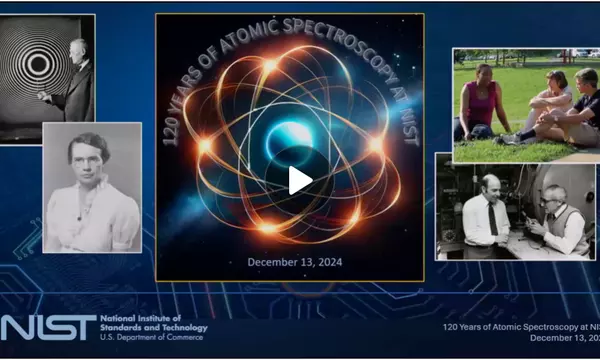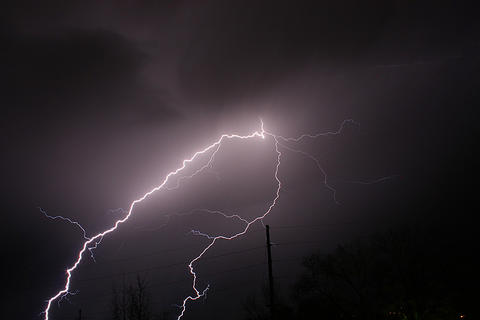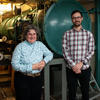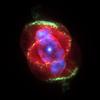The program in atomic spectroscopy at NIST provides accurate reference data on spectral lines and energy levels for a wide variety of important applications. Our spectrometers, among the most powerful of their type in the world, can record spectra from the hard x-ray (wavelength < 0.1 nm) to the infrared (wavelength = 18 000 nm) and include a 10.7 m normal-incidence spectrograph, a 10.7 m grazing incidence spectrograph, a high resolution Fourier transform spectrometer, a high accuracy Fabry-Pérot laser wavemeter, a grazing incidence extreme-ultraviolet spectrometer, and a transition-edge-sensor microcalorimeter. The Data Center compiles wavelengths, energy levels, and transition probabilities that support numerous applications in industry and the scientific community.
The Atomic Spectroscopy Group at NIST has a long history of contributions to optical science and metrology. Please read Joseph Reader's report on the group's history for more information.

Taking Measure: Just a Standard Blog

Shedding Light: How NIST’s Light Database Helps Bring You Computer Chips, Welded Steel and More. Nearly everything we know about the universe comes from light. Cosmologists learn about the universe by studying the light from faraway stars and comparing what it shows us to the light of the same atoms here on Earth. Astronomers use this information to study the expansion of the universe after the Big Bang.

Reaching for the Stars: My Summer Internship Learning About Spectroscopy in Space and on Earth. As a summer high school intern at NIST, I got to take a deep dive into one of the ways scientists study space — the absorption and emission of light by matter, known as spectroscopy.
In Pursuit of Plasma Power: Hot Stuff, Snowstorms, and Starry Skies. Do we really need hot stuff? I’m not talking about Donna Summer’s disco hit of 1979 or global warming. I’m not talking about anything so lukewarm as the surface of our sun—a mere 6,000 kelvins. I don’t even mean something as hot as 1,000,000 kelvins. No, the kind of hot stuff I’m talking about is closer to an unimaginable 200,000,000 kelvins! What possible use could we have for something so hot?
News and Updates
Projects and Programs
Publications
Awards
Contacts
Group Leader
-
(301) 975-3210















